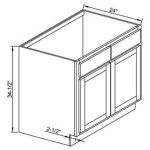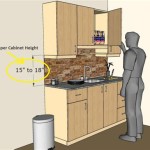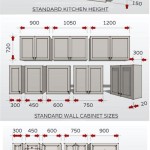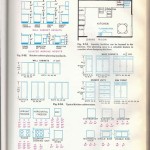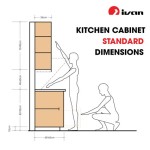How to Remove Kitchen Cabinet Liners
Kitchen cabinet liners are a popular choice for homeowners looking to protect their cabinets from spills, stains, and wear and tear. However, over time, these liners can become discolored, grimy, or simply outdated, necessitating their removal. Removing cabinet liners might seem daunting, but with the right approach, it's a straightforward process that can refresh your kitchen's look and feel.
Understanding the Types of Cabinet Liners
Before attempting removal, it's crucial to identify the type of liner you have. Common types include:
- Vinyl or Plastic Liners: These are the most common and usually come in a roll. They are typically thin and easy to cut to size.
- Contact Paper: This type is similar to vinyl but has a sticky adhesive backing, making it easy to apply but sometimes more difficult to remove.
- Fabric or Cloth Liners: Fabric liners tend to be more decorative and can be found in various patterns and colors. They are typically held in place with adhesive strips or tacks.
Knowing the type of liner will help you choose the appropriate removal method. For instance, vinyl and contact paper liners can often be peeled off, while fabric liners might require a different approach.
Steps for Removing Cabinet Liners
The process of removing cabinet liners varies depending on the type, but here are some general steps you can follow:
1. Gather Your Supplies
You'll need the following tools to make the removal process easier:
- A putty knife or scraper: This will help loosen the liner and pry it from the cabinet walls.
- A cleaning cloth or sponge: To wipe away any leftover adhesive or residue.
- A mild cleaning solution: For cleaning the cabinet surfaces after the liner is removed. You can use warm soapy water or a commercial cleaning product specifically designed for kitchen surfaces.
- Optional: Goo Gone or adhesive remover: If the liner leaves stubborn adhesive residue, a specialized adhesive remover can help.
2. Start with a Small Section
Before tackling the entire liner, begin with a small section, like a corner or the bottom of the cabinet. This will allow you to assess how the liner is adhering to the cabinet and to determine the best removal technique.
3. Peel or Pry the Liner
For vinyl or plastic liners, gently lift a corner of the liner and carefully peel it away from the cabinet surface. If it doesn't come off easily, use a putty knife or scraper to loosen it from the edges. For contact paper or fabric liners, use the putty knife to pry the liner away from the cabinet walls, starting from the edge and working your way towards the center.
4. Clean the Cabinet Surface
Once the liner is removed, wipe the cabinet surface with a damp cleaning cloth or sponge to remove any remaining adhesive, residue, or dust. If the liner leaves sticky residue, use a commercial adhesive remover or a solution of warm water and dish soap. Apply a small amount of the solution to a clean cloth and gently rub the adhesive residue until it dissolves.
5. Inspect for Damage
After cleaning, inspect the cabinet surface for any remaining adhesive or damage caused by the liner removal process. If there is any residue, you can apply a specialized adhesive remover or try rubbing the surface with a damp cloth and a small amount of baking soda. For minor scratches, consider using a wood filler or touch-up paint to blend them in.
Important Considerations
Here are some additional points to keep in mind while removing kitchen cabinet liners:
- Work in a Well-Ventilated Area: Some adhesive removers can release fumes, so it's best to work in a well-ventilated area to prevent breathing problems.
- Test on an Inconspicuous Spot: Before applying any cleaning solutions or adhesive removers to the entire cabinet surface, test them on a small, inconspicuous area first. This will ensure that the solution won't damage the cabinet finish.
- Be Patient: Removing cabinet liners can take some time, especially if they are old or heavily adhered. Don't rush the process to avoid damaging the cabinet surfaces.
Removing kitchen cabinet liners can be a rewarding task, allowing you to update the look of your kitchen and refresh the surfaces. With the right approach and a little patience, you can remove these liners effectively and leave your cabinets looking clean and pristine.

What Is The Best Way To Remove Shelf Liner Residue From Cabinets Hometalk

How To Remove Old Drawer Liner

Simple Diy Drawer And Shelf Liners

Simple Diy Drawer And Shelf Liners

Follow These Tips For Easy Adhesive Shelf Liner Removal

8 Pros And Cons Of Kitchen Cabinet Shelf Liners Everyday Old House

Simple Diy Drawer And Shelf Liners

How To Remove Old Shelf Liner From Cabinets Kitchen Cupboards Cupboard Storage Clean

8 Reasons You Should Use Shelf Liner In Your Kitchen Jam Organizing Wilmington Nc

The Best Shelf Liners Of 2024 Top Picks By Bob Vila
Related Posts


